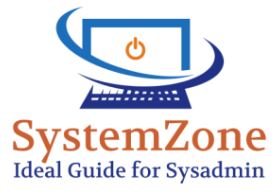mikrotik routeros vlan
Most Relevant Content
MikroTik VLAN Routing Configuration with Manageable Switch
A VLAN (Virtual LAN) is a group of computers, servers, network printers and other network devices that behave as if they were connected to a single network. VLAN is a logical topology that divides a single broadcast domain into multiple broadcast domains. VLAN is a layer 2 method. So, a manageable switch is required to manage VLAN in your network and a router is required to route and control your inter-VLAN. VLAN increases network security and performance as well as improves IT efficiency. So, it will be a better plan to implement VLAN in your network. If you have or manage MikroTik Router and manageable switch, VLAN implementation in your network is not so difficult. In this article, I will show how to easily configure inter-VLAN routing with MikroTik Router and manageable switch. Core Devices and IP Information To configure a VLAN network and inter-VLAN routing, I am using a MikroTik RouterBoard 1100 AHX2 (RouterOS v6.38.1) and Level One (GEP-2450) manageable switch. IP information that I am using for VLAN network configuration are given below. WAN IP 192.168.30.2/30 and Gateway IP 192.168.30.1 LAN networks: 10.10.20.0/24, 10.10.30.0/24 and 10.10.40.0/24 DNS IP: 8.8.8.8 and 8.8.4.4 This IP information is just for my R&D purpose. [...]
- »
VLAN Routing Configuration between MikroTik RouterOS | September 27, 2018
VLAN (Virtual Local Area Network) is a logical topology that divides a single broadcast domain into multiple broadcast domains. It increases network security and performance as well as improves network efficiency. MikroTik VLAN routing configuration with manageable switch was discussed in previous article. Today we will learn how to configure VLAN between MikroTik RouterOS. This Router to router VLAN (layer3 VLAN) is useful when any ISP provide connection to one or more local ISPs who use MikroTik Router to maintain [...]
- »
MikroTik RouterOS Device Mode: Home, Basic, and Advanced – and Their Impact on Hotspot Setup | November 4, 2025
MikroTik RouterOS offers flexible configuration options for everything from home routers to ISP-grade hotspots. When setting up your MikroTik device, you’ll see a Device Mode option in Quick Set — allowing you to choose between Home, Basic, or Advanced modes. These modes define how much control you have over the router’s features and directly affect your ability to create and manage a Hotspot network. In this guide, we’ll explain each mode, show you how to check and change device mode [...]
- »
Troubleshooting Common Issues with Security Cameras in MikroTik Networks | February 7, 2025
30 Seconds Summary When fixing security cameras on MikroTik networks, you might see issues like bad video quality, connections dropping, motion detection not working, and security weaknesses. These problems can happen because of not enough internet speed, network congestion, IP conflicts, old software, or weak security. To fix these, make sure you have enough internet speed, set up the IP settings correctly, give camera traffic priority, and update the software regularly. Also, protect the cameras with strong passwords and encryption. [...]
- »
How to Block MAC Address in MikroTik RouterOS 7 | July 11, 2024
MikroTik RouterOS 7 by default allows any MAC address to get internet connection through it. But we may need to block some MAC addresses sometimes. There are three methods to block MAC address in MikroTik RouterOS 7 – Blocking MAC Address using Bridge Filter Rule. Blocking MAC Address using Firewall Filter Rule and Blocking MAC Address from DHCP Lease. We can use any of these methods if we want to block MAC Address in MikroTik Router. In this article, we [...]
- »
Guest WiFi – How to Setup on MikroTik AP | April 30, 2024
Guest WiFi helps to keep your network safe and secure. Any sensitive wireless network should have a guest network. So, Guest WiFi is so essential for an office network. In a corporate office, guests or visitors frequently come and get connected to get internet for a few times. It is so much security issue to keep guest or visitor in the core network because among them someone can damage important network resources. So, to keep them isolated from the core [...]
- »
MikroTik Wireless AP Configuration with DHCP using Winbox | October 22, 2019
MikroTik Wireless Router is one of the most popular and stable WiFi Routers. WiFi Zone for an ISP or for an office or for a home can easily be configured with MikroTik WiFi Router. MikroTik has a lot of WiFi Routers that can be used as a WiFi Access Point (AP), a WiFi Station or a WiFi Repeater. MikroTik Wireless Router can also be used as both WiFi Station and WiFi AP simultaneously. The simple usage of MikroTik Wireless Router [...]
More Similar Content

